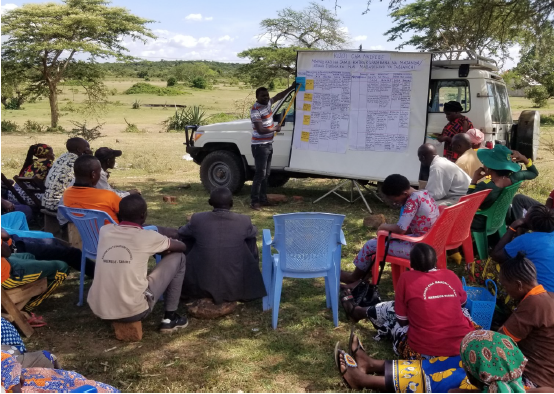SAT attends East Africa Highlands Symposium
A long trip across the country brought two of SAT’s facilitators Hugo Kunguru and Justine Lyasato to Bujumbura, Burundi to participate in the ECHO East Africa Highlands Symposium organized by ECHO East Africa Impact Centre. 150 participants coming from surrounding countries such as Rwanda, Ethiopia, Congo and South Sudan, including farmers, government field workers, NGO workers and missionaries, formed a diverse crowd giving SAT the possibility to exchange views and experiences across countries and backgrounds.
At the three days symposium comprising of theoretical and practical workshops our facilitators had the opportunity to enrich their technical knowledge and compare the use of certain practices as it is done in other countries.
[caption id="attachment_1283" align="alignright" width="300"]

Explaining the Farmer Managed Natural Regeneration[/caption]
Soil erosion was a main focus at the symposium as it poses a major challenge for farming in the highlands. Especially Burundi, consisting mostly of highlands with steep slopes, suffers largely from soil wash off during the rainy season, with a loss of up to 7 tonnes of soil per acre. To counteract soil erosion several techniques such as terrace cultivation, cover cropping and forest regeneration were introduced during the practical workshops. Of particular interest to SAT facilitators was a low input agro-forestry method, the so called Farmer Managed Natural Regeneration. This approach, introduced by a facilitator from World Vision Kenya, aims to revitalize agricultural land by systematically regenerating and managing naturally occurring trees and shrubs from tree stumps, roots and seeds. This practice may help preserve or regain land productivity and its application is moreover easily replicable and of low cost.
A further topic which received special attention was soil fertility. One of the methods introduced related to this topic was the green manure technology. This method can be applied to increase soil fertility and is particularly useful when farming large areas and where insufficient supply of compost and manure pose a constraint. Especially when growing crops such as maize and rice, which have high demands in soil nutrients, intercropping or pre-planting green manure crops can help to enrich the soil with the needed nutrients. There are more than 60 plant species and 100 systems used for green manure and cover cropping according to World Food Prize nominee Roland Bush, who presented this method at the symposium.
The symposium also afforded participants an insight to some cultivation areas of Burundi, showing several of the introduced practices on site. The field trip lead through banana plantations, vegetable gardens and also to cassava fields, where a special technique of cassava farming was explained which includes planting the cassava into small mounds of earth to allow an easier harvest of the roots.
Back in Morogoro, enriched with new farming ideas and practices, SAT is already testing some of the learned techniques such as the green manure and cover cropping. Once ensured about the correct application of these practices we will happily share them with our farmer groups to help them improve their production.






